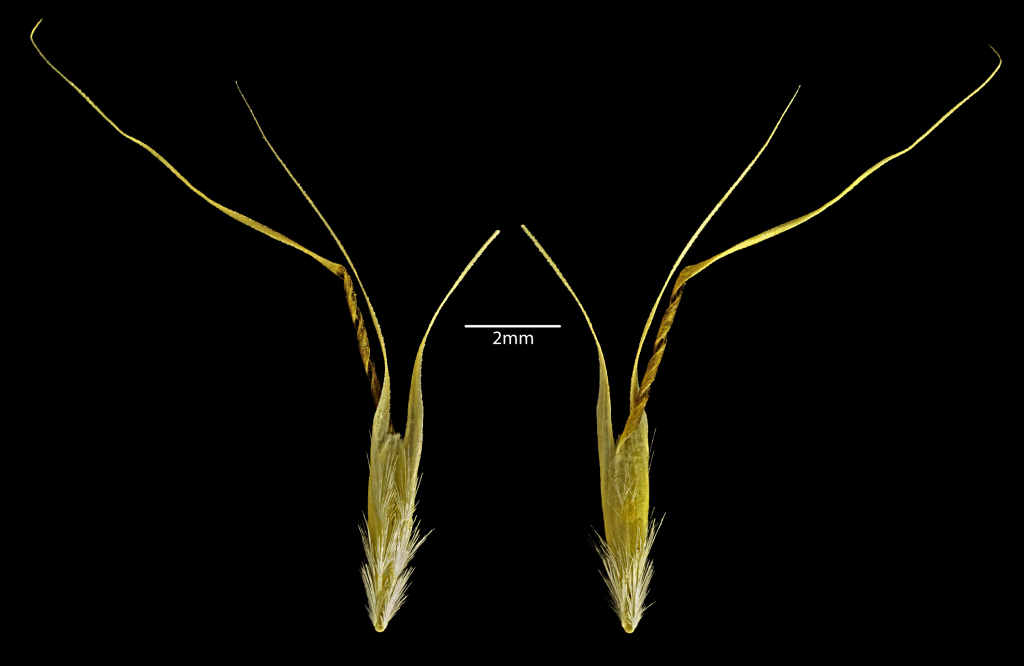Rytidosperma pilosum
(R.Br.) Connor & Edgar Velvet Wallaby-grassLoosely tufted perennial. Leaves (at least the sheath) sparsely to moderately hairy, rarely quite glabrous; blade flat, folded or inrolled, to 15 cm long and 2 mm wide. Panicle oblong to narrowly ovate, usually compact, with spikelets overlapping, 2–8 cm long. Spikelets infrequently purplish, 5–9-flowered; glumes subequal, 9–20 mm long; lemma (2.5–)3.5–6 mm long, with hairs in two series, the upper reduced to 2 sparse dorsal tufts, with more prominent marginal tufts, the lower series more or less complete but tufts typically short and sparse, commonly overlapped by the denser callus tuft; lateral lobes erect, 6–11 mm long, tapered below the middle into fine setae; central awn usually dark and strongly twisted, more than 0.3 mm wide at base; palea oblanceolate to obovate, exceeding sinus by up to 0.5 mm, or occasionally not reaching sinus. Flowers Oct.–Jan.
LoM, MuM, Wim, GleP, VVP, VRiv, RobP, MuF, GipP, OtP, WaP, Gold, CVU, GGr, DunT, NIS, EGL, EGU, WPro, HSF, HNF, OtR, Strz, MonT, HFE, VAlp. Also WA, SA, NSW, ACT, Tas. New Zealand. Widespread and common mostly in dryish sites south of the Great Dividing Range, less common to the north (apparently absent from the north-west). Rare in the alps proper, unlike the closely related and often coextensive Rytidosperma penicillatum.
Flowers Oct.–Jan.Plants with very fine inrolled leaf-blades, compact inflorescences and spikelets and florets at the lower end of the range for the species have sometimes been regarded as forms of Rytidosperma dimidiatum Vickery (Connor & Edgar), a Tasmanian species. Victorian specimens have lemmas with lateral lobes tapered evenly into elongated setae in contrast to Tasmanian examples in which the lateral lemma lobes taper abruptly into very short points (approaching the very reduced condition of e.g. R. nivicola). Further investigation may show at least some of the Victorian specimens warrant taxonomic recognition, but in the interim at least, they are considered better placed in an already variable R. pilosum than in the seemingly very distinct R. dimidiatum.
Walsh, N.G. (1994). Poaceae. In: Walsh, N.G.; Entwisle, T.J., Flora of Victoria Vol. 2, Ferns and Allied Plants, Conifers and Monocotyledons, pp. 356–627. Inkata Press, Melbourne.
 Spinning
Spinning



